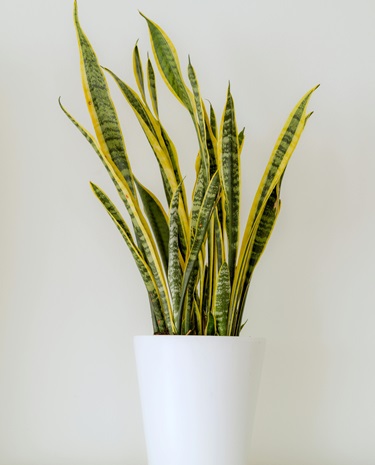Mother-in-Law’s Tongue, also known as the Snake Plant (Sansevieria trifasciata), is a popular and hardy houseplant renowned for its striking sword-like leaves and low-maintenance requirements. Native to West Africa, this plant has become a favorite for both novice and seasoned plant enthusiasts. Here’s a comprehensive guide on how to grow and care for this resilient beauty.
Why Choose Mother-in-Law’s Tongue?
- Low Maintenance: Ideal for people with busy schedules, the Snake Plant thrives with minimal care.
- Air Purifying: It’s recognized by NASA for its air-purifying qualities, as it removes toxins like formaldehyde and benzene.
- Decorative Appeal: Its architectural leaves and vibrant green hues add elegance to any indoor space.
Growing Mother-in-Law’s Tongue
Light Requirements

- Ideal Conditions: Snake Plants prefer bright, indirect light but can adapt to a wide range of lighting conditions, including low light.
- Avoid Direct Sunlight: Too much direct sun can scorch their leaves, especially during peak hours.
Soil
- Use a well-draining potting mix. A cactus or succulent soil mix works well.
- Avoid heavy soils that retain moisture, as the plant is susceptible to root rot.
Temperature and Humidity
- Thrives in temperatures between 60°F and 85°F (15°C to 29°C).
- Tolerates low humidity levels but prefers a slightly dry environment.
- Keep it away from drafts or sudden temperature changes.
Caring for Mother-in-Law’s Tongue
Watering
- Frequency: Water sparingly. Allow the soil to dry out completely between waterings.
- Seasonal Adjustments: Reduce watering in the winter when the plant’s growth slows.
- Technique: Avoid overwatering, as it’s the most common cause of plant failure.
Fertilizing
- Feed with a balanced liquid fertilizer diluted to half strength during the growing season (spring and summer).
- Avoid fertilizing during the fall and winter months.
Pruning
- Remove dead or damaged leaves at the base using a clean, sharp knife or scissors.
- Pruning can also help maintain the plant’s shape and encourage healthy growth.
Repotting
- Repot every 2-3 years or when the plant becomes root bound.
- Choose a pot slightly larger than the current one, with proper drainage holes.
Propagation
- Division: Separate the root ball into smaller sections and plant each in its own pot.
- Leaf Cuttings: Cut a healthy leaf into 4–6-inch sections and plant them in moist soil. Rooting can take several weeks.
Common Problems and Solutions
Yellowing Leaves
- Cause: Overwatering.
- Solution: Allow soil to dry out and reduce watering frequency.
Brown Tips
- Cause: Low humidity, underwatering, or exposure to drafts.
- Solution: Maintain consistent watering habits and protect the plant from drafts.
Pests
- Problem: Mealybugs or spider mites.
- Solution: Wipe leaves with a damp cloth and apply an insecticidal soap if necessary.
Styling Tips
- Use decorative pots to complement the plant’s bold appearance.
- Pair with other low-maintenance plants like pothos or ZZ plants for a lush indoor garden.
- Place in bedrooms, offices, or living rooms for a touch of greenery and improved air quality.
Conclusion
Mother-in-Law’s Tongue is a versatile and forgiving plant, perfect for enhancing indoor spaces with minimal effort. With proper care, this resilient plant can thrive for years, adding beauty and health benefits to your home. Whether you’re a seasoned plant parent or just starting out, the Snake Plant is a worthwhile addition to your collection.




Comment here